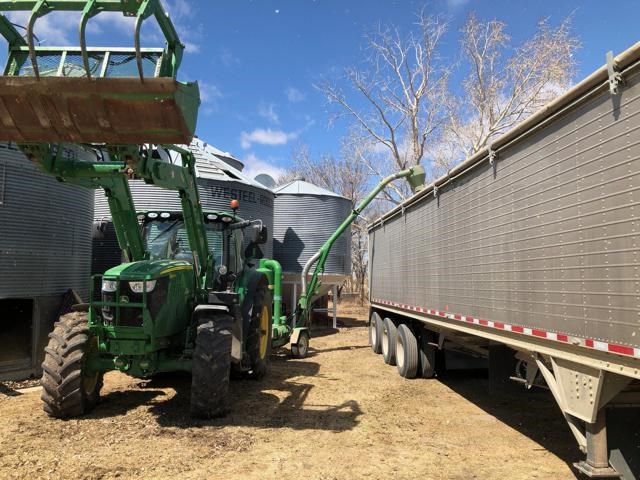Rainfall in the past week has greatly improved moisture conditions for crops in the southeast region, as most crops are developing normally for this time of year.
Rainfall amounts varied, with the RM of Weyburn area recording 15 mm of rain while Brokenshell had 38 mm, Wellington 15 mm, the RM of Fillmore had 28 mm, and rain ranged from 5 to 21.5 mm in the RM of Francis.
In the RM of Laurier, rainfall ranged from 26.4 to 37 mm. The Kisbey area received the most rain in the region with 63 mm.
For producer Marcel Van Staveren, the variableness of the rainfall was seen on the lands he and his brothers farm in the Creelman-Fillmore area.
On their land south of Creelman extending down to Griffin, they had up to four inches of rain, with about 10 per cent of their crops under water, while north of Creelman the land only received about an inch, with their land west of Fillmore closer to two inches, close to three inches closer by Stoughton.
Cropland topsoil moisture was rated as six per cent surplus, 61 per cent adequate, 31 per cent short and two per cent very short.
Hay and pasture land topsoil moisture is rated as one per cent surplus, 58 per cent adequate, 32 per cent short and nine per cent very short.
In the region, 71 per cent of fall cereals are developing normally, 24 per cent is ahead and five per cent is behind development, while for spring cereals, 70 per cent is developing normally, 10 per cent is ahead and 20 per cent behind.
For oilseeds, 72 per cent are developing normally, four per cent is ahead and 24 per cent is behind in their development, and 73 per cent of pulse crops are developing normally, nine per cent is ahead and 18 per cent is behind.
Van Staveren said their early-seeded cereal crops, such as durum, wheat and barley, are looking light compared to their later-seeded crops.
“We got enough rainfall to keep things going nicely. The early-seeded crops are good but not great, but you need great to make money in 2020. We’re counting on high yields to get through this. Lentils are the only exception, as their prices are very strong right now,” said Van Staveren, adding that what helped them greatly was the excess moisture received last fall during harvest, as that moisture was what helped make seeding possible this spring.
“The very thing we cursed became our savior in respect to our crops, to extend its ability to do okay,” he said.
The crops which are now under water are soybeans, which can tolerate the excess moisture, and when the water is soaked up into the ground, it will resume growing again, said Van Staveren.
With the thunderstorms over the weekend, he noted he got about an inch and a half on Friday, and on Saturday he saw two or three millimetres of rain. Their land north of Creelman has received about two inches since May 1st while the land south of Creelman has had about five inches, and some friends further south towards Griffin have received up to seven inches of rain in that time.
“That’s quite a variance,” he said, adding that grasshoppers had been increasing in number recently, but so far on their land their numbers have been fairly light, while flea beetles have not been an issue so far in their canola crops.
Crop conditions range from fair to excellent in the southeast region, with 65 per cent of the spring wheat, 43 per cent of durum, 80 per cent of peas, 71 per cent of chickpeas, 66 per cent of soybeans, 57 per cent of the canola, and 67 per cent of the lentils in good to excellent condition. Canola growth has been patchy due to dry conditions and flea beetles.
Haying has just begun in the southeast area, with two per cent of the hay cut and one per cent baled or put into silage. Hay quality is rated as five per cent excellent, 38 per cent good, 33 per cent fair and 24 per cent poor. The dry conditions have results in short hay land and pasture, as well as reduced carrying capacity and expected yield.
The majority of crop damage this week was from dry conditions, wind, gophers and insects such as cutworms, flea beetles and grasshoppers. Farmers are busy finishing in-crop herbicide applications, starting haying, hauling grain and scouting for insects and diseases.



